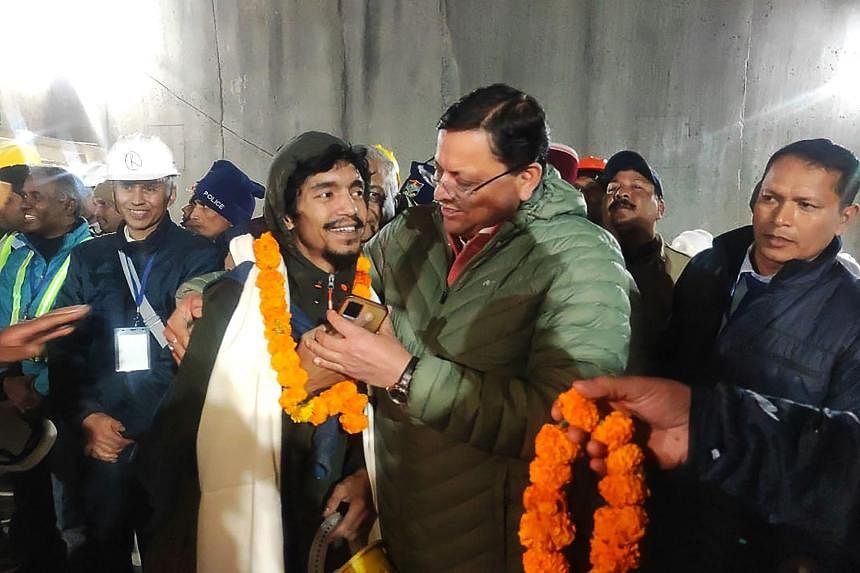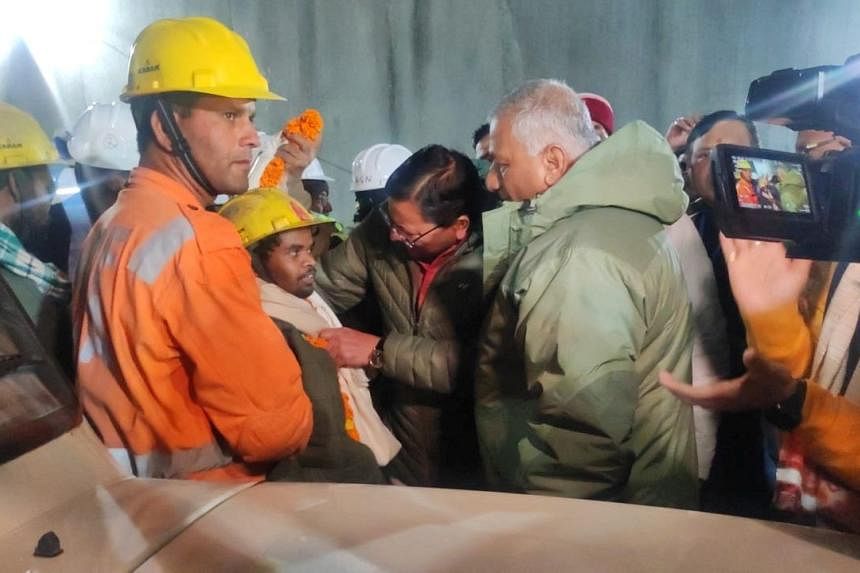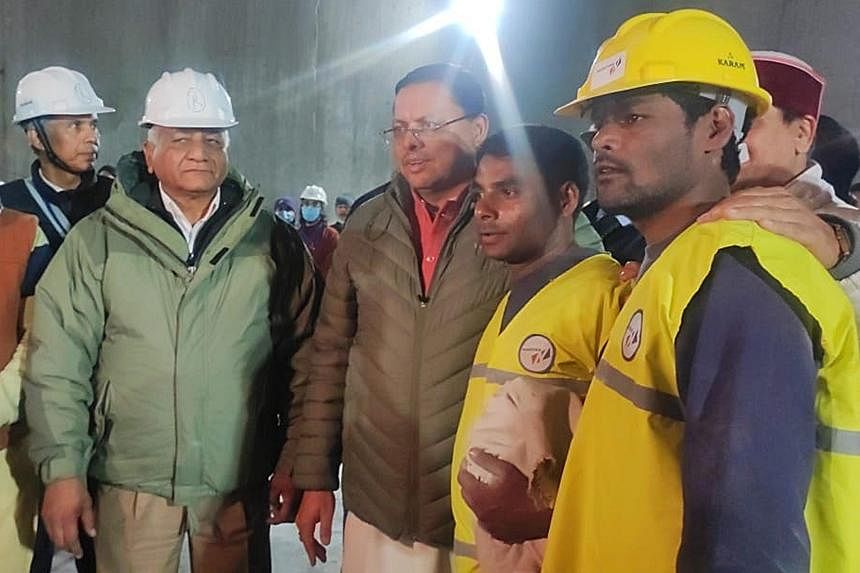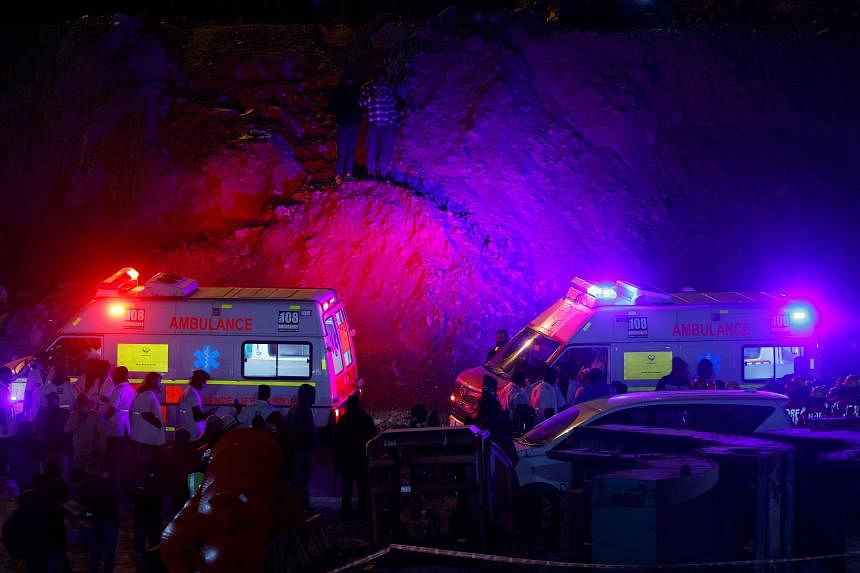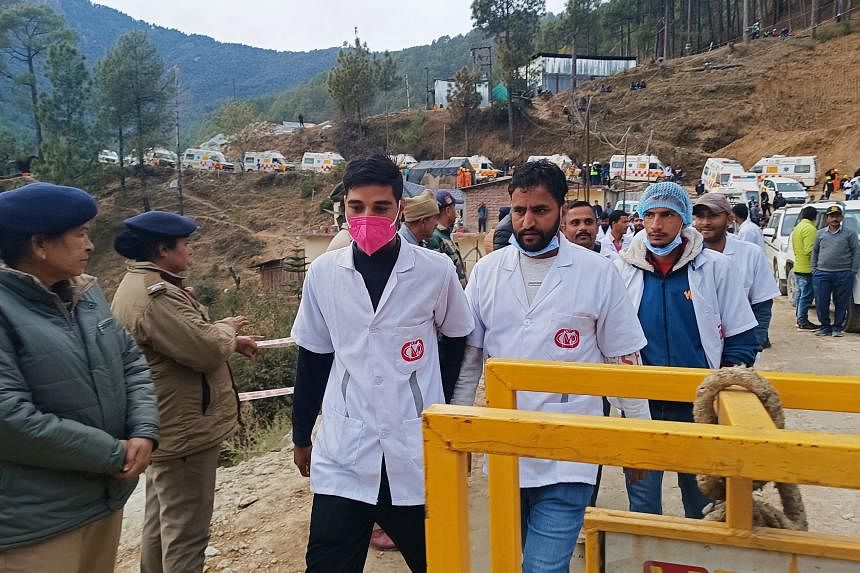SILKYARA, India - Indian rescuers have safely brought out all 41 workers from a collapsed Himalayan road tunnel after a marathon 17-day engineering operation to free them, a minister has said.
“I am completely relieved and happy as 41 trapped labourers in the Silkyara Tunnel Collapse have been successfully rescued,” Minister for Road Transport Nitin Gadkari said in a statement on Nov 28.
“This was a well-coordinated effort by multiple agencies, marking one of the most significant rescue operations in recent years.”
The evacuation of the men – low-wage workers from some of India’s poorest states – began more than six hours after rescuers broke through the debris in the tunnel in Uttarakhand state, which caved in on Nov 12.
They were pulled out on wheeled stretchers through a 90cm-wide steel pipe, with the entire process being completed in about an hour.
The first to be evacuated, a short man wearing a dark grey winter jacket and a yellow hard hat, was garlanded with marigold flowers and welcomed in traditional Indian style inside the tunnel by state Chief Minister Pushkar Singh Dhami and federal Deputy Highways Minister V.K. Singh.
Ambulances with their lights flashing had earlier lined up at the mouth of the tunnel to transport the workers to a hospital about 30km away.
Local residents who were gathered outside the tunnel set off firecrackers, distributed sweets and shouted slogans hailing “Mother India”.
The 41 men had been getting food, water, light, oxygen and medicines through a pipe, but efforts to dig a tunnel to rescue them with high-powered drilling machines were frustrated by a series of snags.
Government agencies managing the unprecedented crisis turned on Nov 27 to “rat miners” to drill through the rock and gravel by hand from inside the 90cm-wide evacuation pipe pushed through the debris after machinery failed.
The miners are experts at a primitive, hazardous and controversial method used mostly to get at coal deposits through narrow passages. They get their name from their resemblance to burrowing rats.
The miners, brought in from central India, worked through the night of Nov 27 and finally broke through the estimated 60m of rock, earth and metal on the afternoon of Nov 28.
The portion of the tunnel where the workers were trapped is 8.5m high and 2km long, according to a government statement.
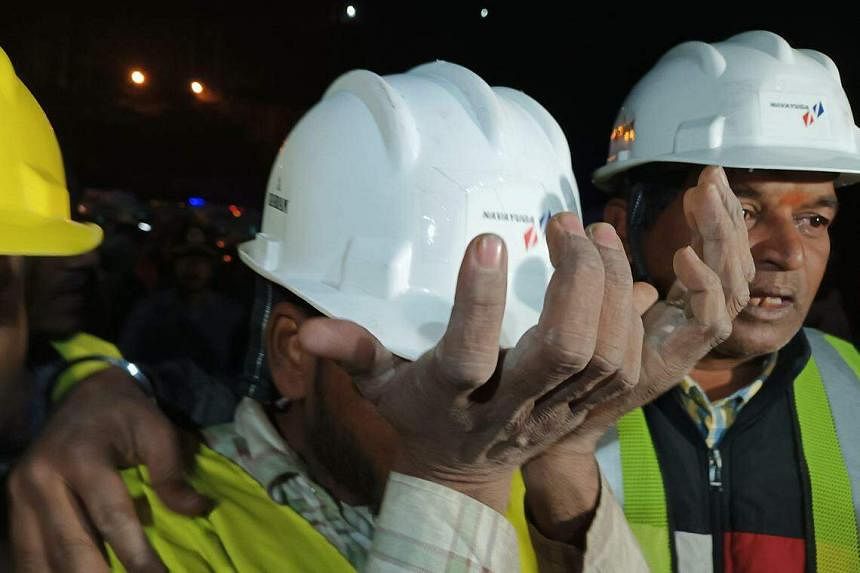
The tunnel is part of the US$1.5 billion (S$2 billion) Char Dham Highway, one of Prime Minister Narendra Modi’s most ambitious projects, aimed at connecting four Hindu pilgrimage sites through an 890km network of roads.
The authorities have not said what caused the cave-in, but the region is prone to landslides, earthquakes and floods.
The government recently said the National Highways Authority of India – which develops, maintains and manages highways – will carry out an audit of the 29 tunnels currently under construction in the country.
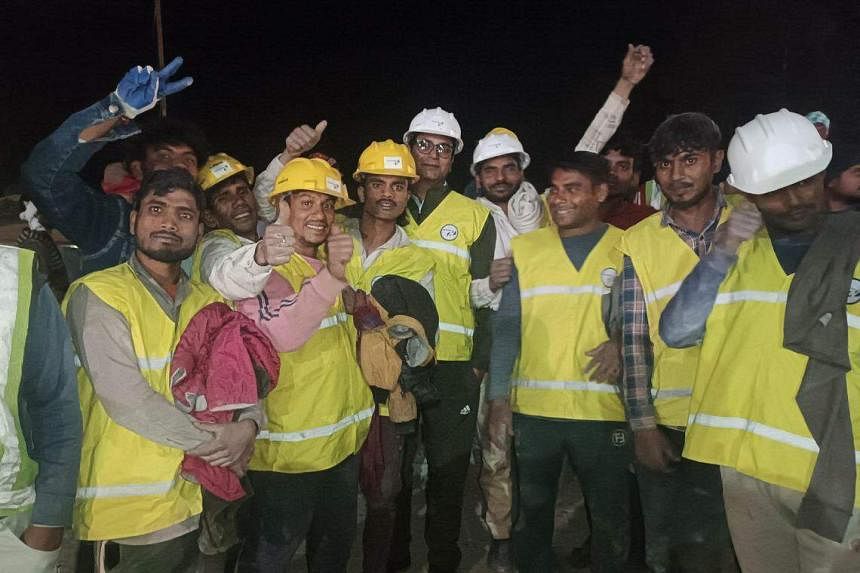
Earlier, before the men were rescued, Mr Jyotish Basumatary said he had talked to his brother eight or nine times since he became trapped.
“The last time I spoke to him was last night,” Mr Basumatary said. “He said, ‘We are fine. We are getting food and clothes, mustard oil, chapatis, vegetable, lentils, rice and biscuits, apples and oranges.’”
Mr Basumatary said that the workers had gone hungry on the first day, but that basic food items – rice flakes, cashews and raisins – reached them on the second day. Proper food, including hot meals, started reaching them about a week later, he said.
Most of the workers trapped in the tunnel were from India’s poorer states, such as Jharkhand, Odisha and Assam, places with high levels of migration as workers seek employment. Family members said they were working for salaries of about US$250 a month.
“I am feeling very good – my heart, today, is tall like the mountain,” the father of one worker told television reporters outside the tunnel, pointing with his head to the mountain which had trapped his son.
The man, who gave his name as Chaudhary to reporters, said the government had helped him with accommodation as he waited for his son near the tunnel, and had provided him with the clothes he was wearing.
The man had a backpack. A television reporter asked him what he was carrying in it for his son, whom he would accompany to the hospital.
“Nothing. We have nothing, so what can I take for him?” the man said with a smile, as he unzipped the bag to show some clothes. “The clothes I am wearing were also given to me.”
“I will tell him, ‘Son, I am very happy today. The whole country, even the trees and plants, are happy,’” he said. REUTERS, AFP, NYTIMES
